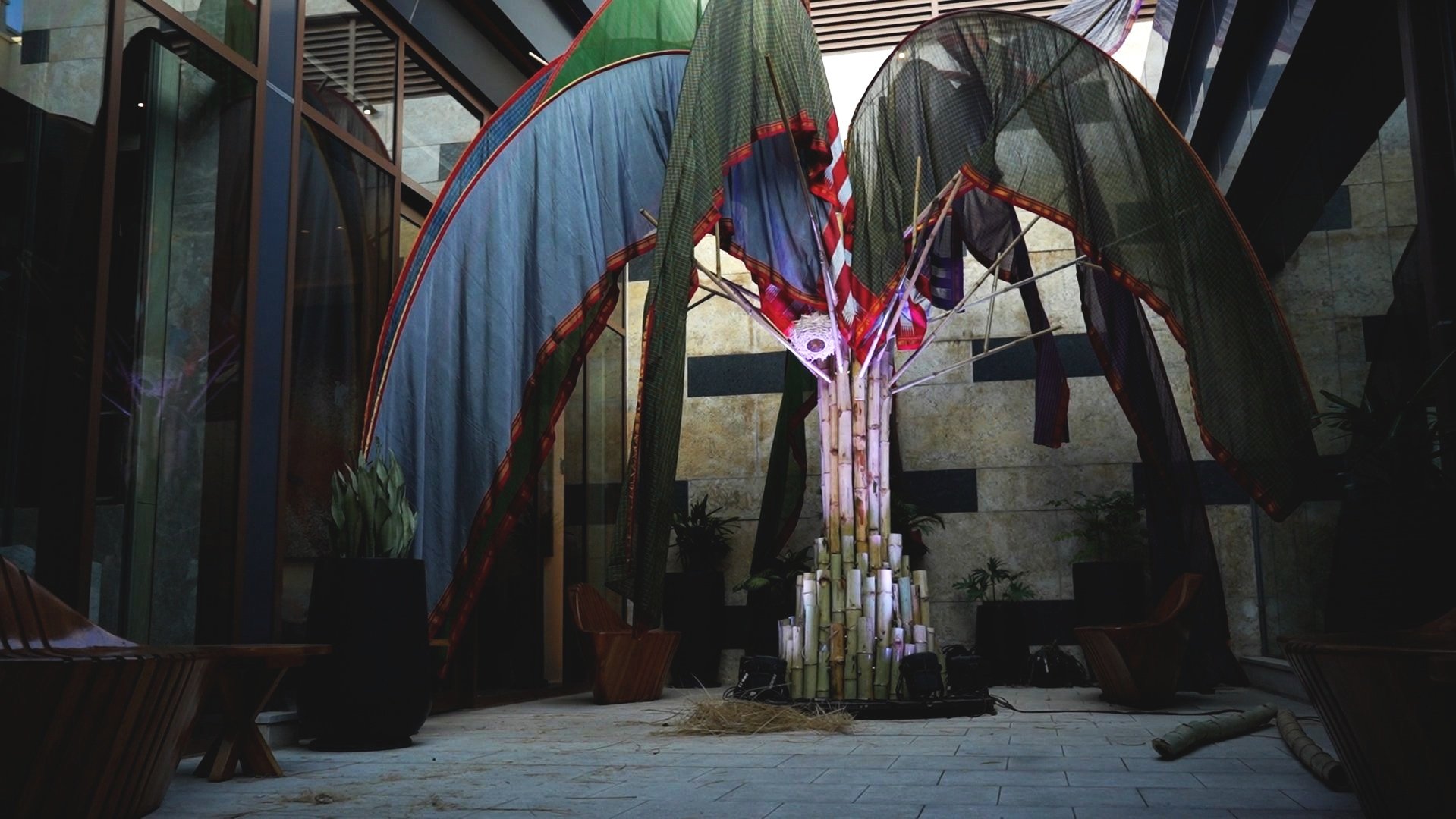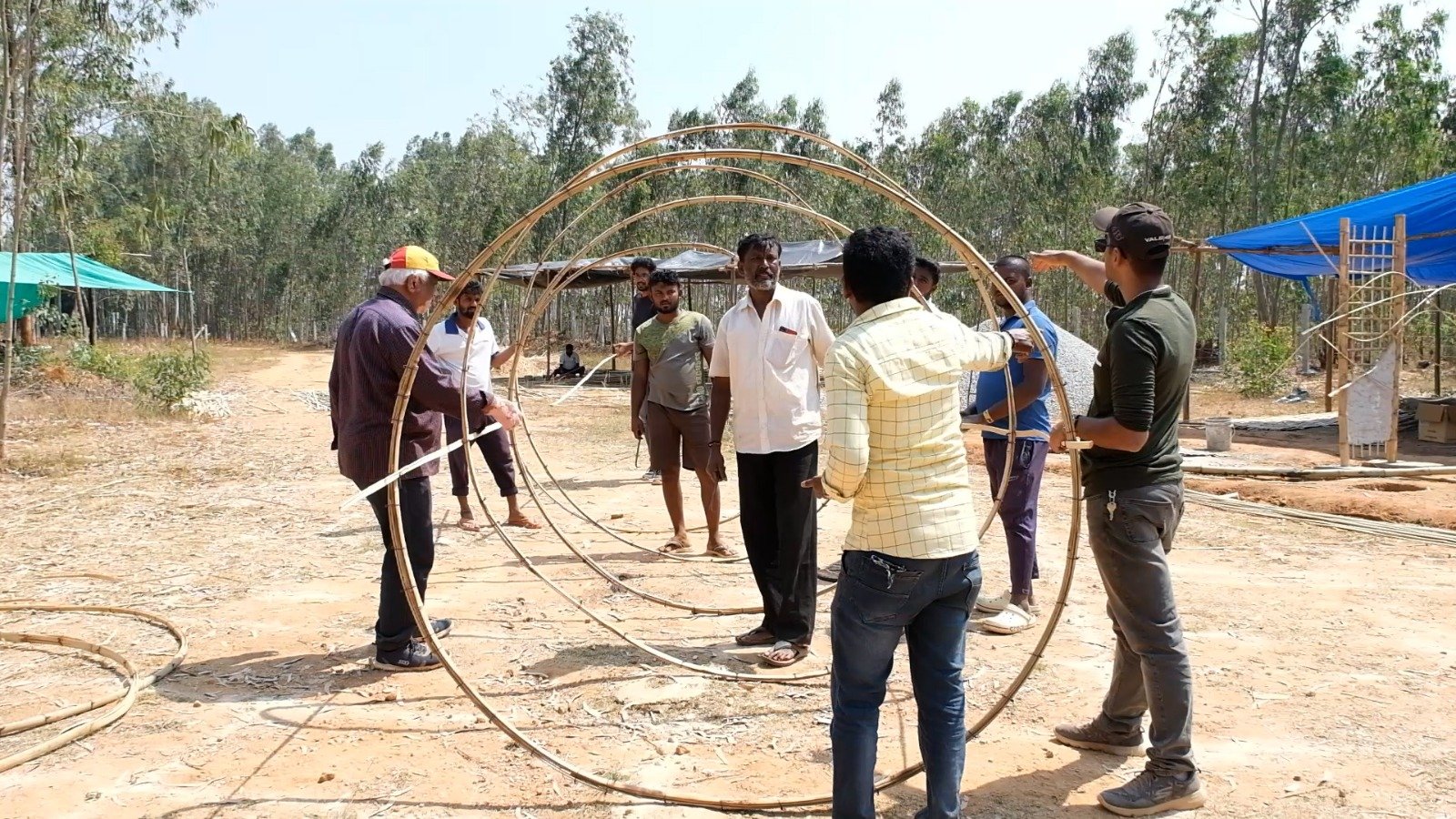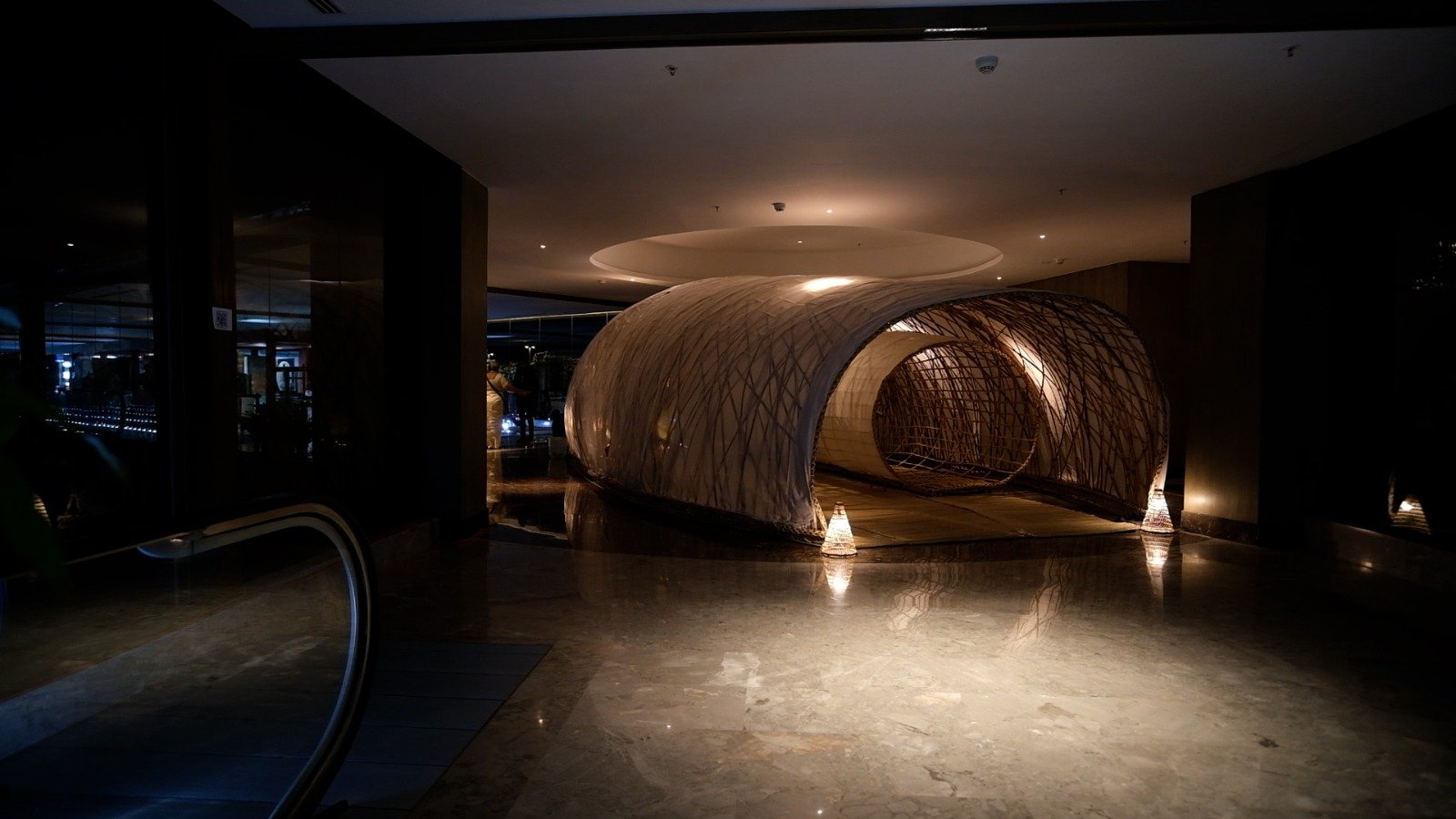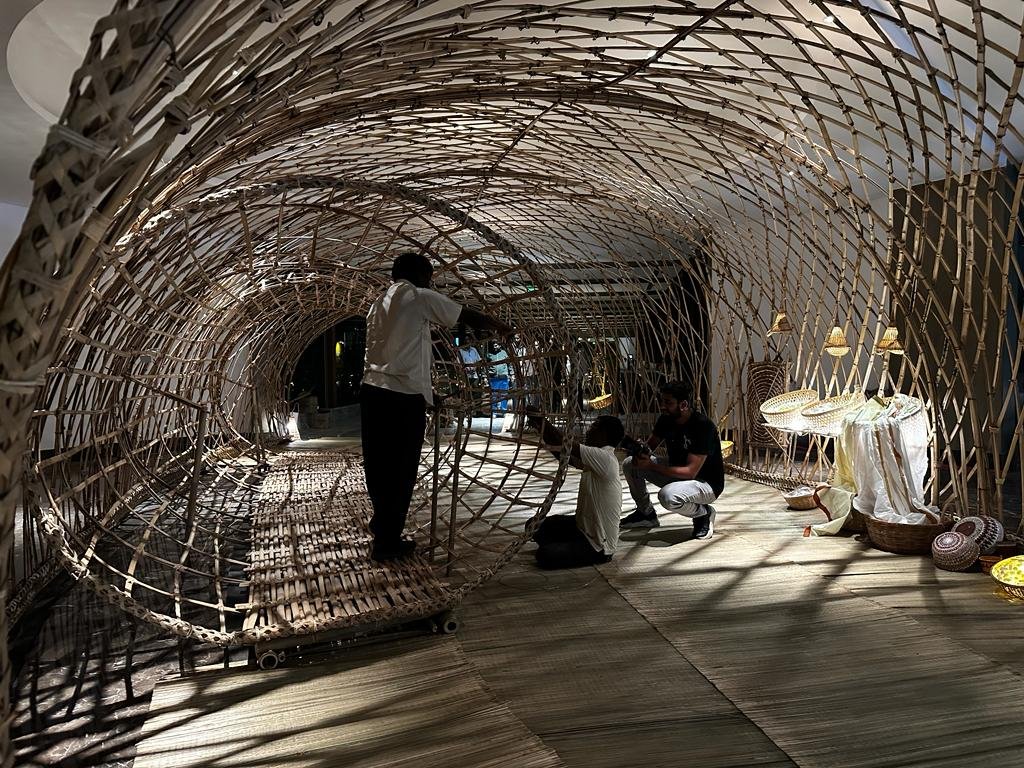
Vasudhaiva Kutumbakam- Handloom and Handicraft exhibition, 1st FMCBG meeting G20, Bengaluru
Government of Karnataka and Government of India
This project was conceptualized as a wondrous way to tell the story of India’s rich cultural heritage along the lines of the first FMCBG meeting of the G20 summit at Bengaluru. Conceptualized and guided by Ms. Chandra Jain, the designer team was a collaborative effort of Manasaram Architects and CGBMT with the principal architect Ms. Neelam Manjunath, exhibition designer Mr. Siddartha Chatterjee and Crafts curator Ms. Meera Naidu. An intense 2 weeks of design discussion and conceptualization ensued progressing from sketchy figures on butter sheets to finished working drawings ready for the site
The entire exhibition was to follow the core principles of sustainability and be manufactured in a way that was circular end to end. The exhibition sought to showcase to delegates the beauty of simplicity and exhibit on a global stage the vernacular techniques that have been perfected and honed over generations. The intervention also sought to break up the rigid lines of the surrounding architecture by introducing flowing curves and natural materials. The natural textures add a send of warmth to the entire space compounding the visual impact of the exhibition. The warm environment sets the tone to welcome delegates in the spirit of ‘Athithi Devo Bhava’
THE SETTING: The linkway connecting the hotel with the convention center was the primary space of intervention. Replete with highly reflective floors and near transparent walls, the setting was ideal for being populated with design elements
DESIGN ELEMENTS
The design intervention spanned the entire linkway from the hotel lobby to the convention center and sought to craft the entire journey.
The Cocoon, the Silk Story: The centerpiece of the entire exhibition, this installation was based on an earlier pavilion that was dismantled and reduced in size. Capturing the story of Karnataka’s rich silk culture, the form is a metaphoric reference to the most important stage in silk production- the rearing of silkworm cocoons.
Outside shell: Represents the cocoon which is woven by the silkworm and showcases the actual plant, cocoons, varieties of yarn, and the rich silk culture of Karnataka through artifacts, installations, and samples. The white cloth contrasts with the inner woven bamboo split creating a cosy interior.
Worm: Inside the belly, audiovisuals tell the Silk Story -the process of production of silk from the eggs, mulberry plants, cocoon development, silk extraction, spooling, wearing, and finally, beautiful silk!
The Wall the Wave: The walls and column covers are structural and decorative at the same time. The intertwined bamboo split waves suggest a sense of directionality guiding circulation toward the exhibition. These splits were supported on a bamboo wall which displays art forms of Karnataka such as Chittara art and column covers.
Chittara is an art form in which clay paste is used to create geometric patterns along the floors and walls of house entrances. It is a source of joy and allows the people of the community to thrive creatively and it is an art form that holds a lot of socio-cultural and artistic value.
The Raft and the Craft: The name was given by exhibition designer Siddhartha Chatterjee who envisioned all the artifacts to be kept on floating tables on the highly polished marble floors of the hotel to give a raft-like appearance.
We took it a step further and made the table rafts actual bamboo rafts fixed on recessed mirror-clad boxes. This completed the installations as floating rafts carrying and showcasing the exquisite crafts and culture of Karnataka.
Flows and Falls: This installation was originally envisioned quite differently for the convention center lobby but was altered due to security reasons. The bamboo trees represent a vernacular vocabulary and backdrop to the rich cultural fabriscape of Karnataka. The installation seeks to draw a poetic reference to the symbiotic relationship between nature represented by the tree and culture represented by the chromatic hues of the sarees. A local saree drapes naturally along the catenary curves of multiple bamboo splits, gently swaying to the rhythms of the winds.
The flowing natural curves compliment and break up the rigid lines of the surrounding architecture.
All exhibits were manufactured at our upcoming HQ site, and transported to the hotel and convention center for assembly. Artisans, motivated individuals, and industry experts all collaborated to make this event a resounding success.





